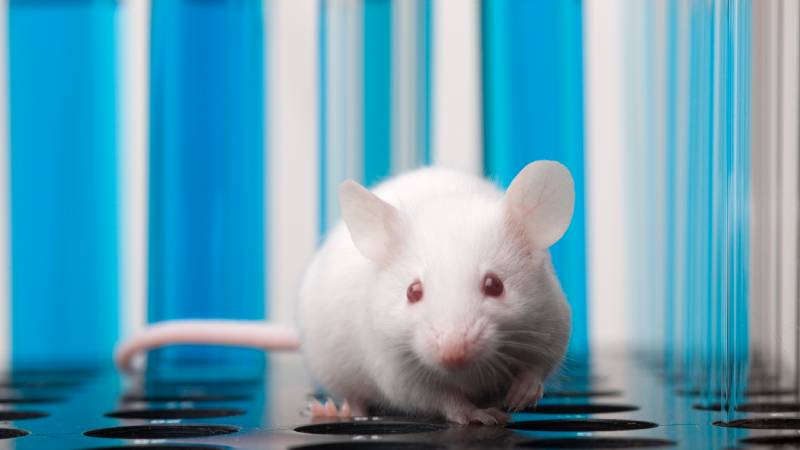EPA Releases Plan to Achieve Total Replacement of Mammalian Testing
On September 10, 2019, the Physicians Committee participated in a historic signing ceremony for an ambitious memo committing the Environmental Protection Agency (EPA) to reduce, and eventually eliminate, tests on mammals.
The memo, from EPA Administrator Andrew Wheeler, directs the agency to reduce mammal study requests and funding 30% by 2025 and completely eliminate them by 2035. While no one knows exactly how many animals are killed each year in experiments under the EPA’s purview, the EPA estimates that between 20,000 to more than 100,000 animals are used in toxicology studies submitted to the agency each year. Last week, the EPA released a work plan intended to guide the agency as it moves beyond animal testing. We’re happy to report that the plan incorporates the most current ideas from both the EPA and its stakeholders.
The New Approach Methods Work Plan defines a New Approach Method, or NAM, as “any technology, methodology, approach, or combination that can provide information on chemical hazard and risk assessment to avoid the use of animal testing.” Importantly, the EPA includes not only test methods and strategies to replace animal tests but also non-testing approaches that can reduce the need for testing. Non-testing approaches include reviewing all of the information already available on chemicals being assessed as well as on analogs that are structurally or functionally similar. Experience has shown that these approaches frequently account for the greatest reductions in animal use for chemical testing.
It’s no coincidence that the work plan was released on the fourth anniversary of the Frank. R. Lautenberg Amendments to the Toxic Substances Control Act (TSCA). Thanks in part to the Physicians Committee’s efforts, these amendments explicitly require the EPA to facilitate the use of test methods and strategies that reduce or replace the use of vertebrate animals “while providing information of equivalent or better scientific quality and relevance.” As the EPA observes, this implies that the scientific quality and relevance of traditional animal tests also needs to be considered to ensure newer, more advanced tests aren’t being unfairly penalized. As we at the Physicians Committee have been saying for decades, differences between animals and humans limit the ability of animal tests to predict effects on human health, so we’re encouraged that the EPA acknowledges that it may not always be appropriate to compare NAMs to animal studies. In addition, the EPA will commission a U.S. National Academies of Sciences report on the uncertainties and utility of existing information from mammalian toxicity tests in the context of NAM development.
To assess progress toward reducing the use of animals, the number of animals that are currently being used must first be determined, and one of the work plan’s objectives is the establishment of appropriate baselines and metrics. One such effort is the Analysis of TSCA Available, Expected, and Potentially Useful Information (ATAEPI), which will determine the extent of animal testing that the agency has required chemical companies to perform under TSCA. Once this project is complete, the EPA will have a single database of all TSCA-related animal studies that were conducted or made available and will be able to publish metrics, consisting of the number of mammals that were required for those tests by year.
To refine and develop NAMs, the EPA’s research scientists and regulators will begin with problem formulation: identifying scientific questions, setting goals for NAM use, and defining acceptable levels of uncertainty. Matching the type and certainty of information provided by a NAM with what is required for a given decision ensures the relevance of NAM development to the agency’s ongoing regulatory needs. Once developed, a NAM’s performance can be evaluated through case studies, which build confidence in its application to regulatory decision-making.
Throughout the work plan, the EPA sets aggressive timelines with deliverables for each of its objectives. The EPA will make communication and other informational materials available through a central NAMs website (https://epa.gov/nam) as well as hold an Annual Conference on the State of the Science on Development and Use of New Approach Methods (NAMs) for Chemical Safety Testing. Our experts at the Physicians Committee look forward to continuing to work with the agency to help it meet its goals and to apply lessons learned to other agencies and products that are currently tested on animals, including pharmaceuticals, tobacco products, and some personal care products.









